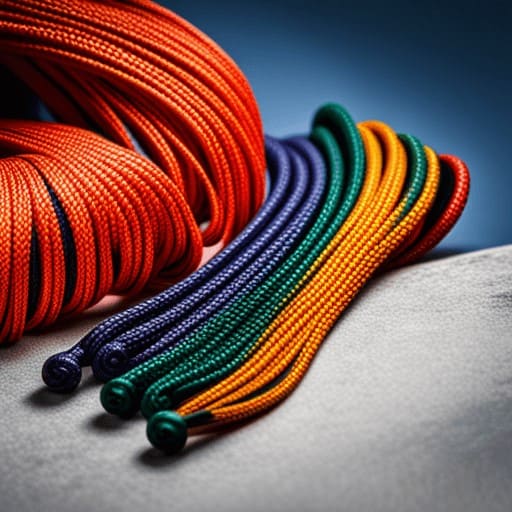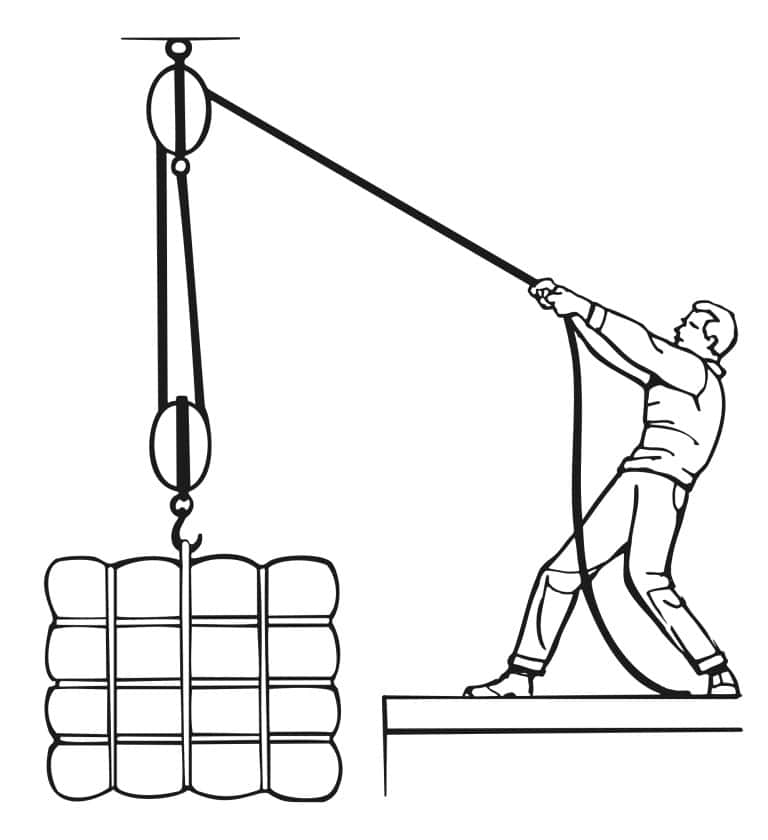When it comes to survival gear and outdoor activities, having a reliable rope is crucial. Two popular options on the market are paracord and nylon rope. While they may seem similar at first glance, significant differences between the two can impact their performance in different situations.
Table of Contents
Understanding Paracord Vs. Nylon Rope
Paracord
Paracord, also called parachute cord or 550 cord, is a type of rope that is both lightweight and long lasting. It was initially designed for use in the suspension lines of parachutes. Today paracord is also used for survival and outdoor activities, and crafting. It is made of nylon and has a braided sheath and several inner strands that can be separated and used for different purposes.
Paracord is renowned for its exceptional strength, remarkable durability, and unmatched versatility. Different types, including Type I, Type II, and Type III, are available. Each type has a unique level of strength and composition of inner strands. For a more indepth look at paracord our guide Paracord Use, Strength, and Working Load will be helpful.
Nylon Rope
Nylon rope is a synthetic rope made of nylon fibres known for its strength, durability, and resistance to abrasion, chemicals, and UV rays. Nylon rope is available in different types, including kernmantle rope, mil-spec rope, and para-max rope, which vary in construction and strength.
Nylon ropes are highly versatile and can be used in boating, towing, construction, rock climbing, and rappelling. They are incredibly durable and flexible, making them an essential choice for many industries.
Differentiating Uses
Paracord and nylon rope are versatile and durable materials but have different uses depending on the situation. Paracord is more versatile and commonly used for outdoor and survival activities, while nylon rope is more widely used for heavy duty applications. Here are some scenarios where one might be more suitable than the other:
Paracord is often the go to material for survival situations and outdoor activities because of its strength and versatility. It can be used for shelter building, securing gear, making snares, and more. On the other hand, nylon rope is better suited for heavier loads and tasks requiring more rigidity, such as setting up a pulley system.
Fishing: Paracord can create fishing lines, but there are better choices due to its stretchiness and low weight capacity. Nylon rope is the better option for fishing lines, as it is stronger and less likely to break under the weight of a fish.
Bracelets and Necklaces: Paracord bracelets and necklaces are becoming increasingly popular among fashion enthusiasts due to their lightweight design and exceptional durability. These accessories are incredibly versatile and can be used for various purposes, including providing emergency cordage that can span several feet. In contrast, nylon rope bracelets and necklaces are less popular and lack the versatility of paracord accessories. T
Wilderness, Military and Hunting: Paracord is a wilderness, military and hunting gear staple due to its strength and versatility for securing gear, building shelter, and making snares. Nylon rope is also used in military and hunting gear but is typically reserved for heavier tasks such as rappelling and hauling heavy loads.
Towing: Nylon rope is commonly used for towing due to its high strength and resistance to abrasion. Selecting the appropriate thickness and strength for towing is crucial, as the rope must withstand significant weight and force.
Tarps: Both paracord and nylon rope can be used to secure tarps and other outdoor gear. Nylon rope is a better choice for this task due to its strength and resistance to UV rays and other environmental factors.
Analyzing Strength and Durability
When it comes to strength and durability, both paracord and nylon rope have their advantages and disadvantages. However, paracord is often considered stronger due to its higher breaking strength. Paracord typically has a breaking strength of 550 lbs, while nylon rope can range from 150 lbs to 10,000 lbs depending on the type and diameter.
Paracord is thinner than most nylon ropes, making it easier to work with and more versatile in certain situations. However, the thinner diameter also means that it may not be as durable as thicker nylon ropes.
Nylon rope is known for its durability and resistance to abrasion, chemicals, and UV rays, making it a good choice for outdoor use. It also has a higher elongation rate than paracord, which means it can stretch without breaking. Paracord and nylon rope quality can vary depending on the manufacturer and type, influencing the strength and durability.
Considerations for Storage and Maintenance
When storing and maintaining your paracord or nylon rope, there are a few things to keep in mind. Proper storage is essential to prevent mildew, rot, and water damage. It is best to store your paracord or nylon rope in a dry and cool place, away from direct sunlight. You can coil the rope, store it in a plastic container, or hang it on a hook. Avoid storing the rope in a damp or humid area to prevent it from deteriorating.
Warm water and mild soap can remove dirt or debris from your rope. Avoid harsh chemicals or bleach, which can damage the rope’s fibres. After cleaning, make sure to dry the rope thoroughly before storing it.
Before using any rope, ensure it is in good condition and inspect it regularly for any signs of wear and tear. If you notice any fraying or damage, it is best to replace the rope to avoid any accidents or mishaps.
Choosing Based on Price and Quality
Price and quality are two factors to consider when deciding between paracord and nylon rope.
In terms of price, nylon rope is generally less expensive than paracord because nylon is a synthetic material that is widely available and easy to produce. If you are on a tight budget and need a rope for basic tasks, nylon rope may be the better option.
Paracord is a type of rope made from nylon with additional features such as high tensile strength and multiple inner strands. However, paracord may be worth the extra investment if you need a rope to handle more demanding tasks, such as survival or outdoor activities.
Final Thoughts
After comparing paracord and nylon rope, it is clear that both have their strengths and weaknesses. Paracord is a versatile, lightweight option for survival situations and crafting. On the other hand, nylon rope can handle heavy loads and is resistant to UV rays and chemicals, making it a reliable choice for harsh environments or industrial and commercial use.






